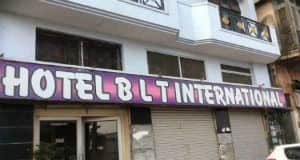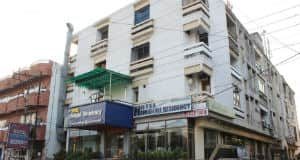Jaisalmer Fort
Where words fail, history speaks. And history reflects not just in the sacred texts and anecdotes that have been in circulation since ages. There is another characteristic of history that stands out beautifully and keeps the viewers mesmerized with its inner beauty and charm. This characteristic is none other than a structure that can be in the form of a temple, fort, cave, hill range, statue, or even an entire village that is intact in its core form that was laid several decades or centuries ago.

Discussing about the historical monuments of India, the name of Jaisalmer Fort of Rajasthan comes forth as one of the biggest forts not just in India, but across the universe. Like all other forts, this too has become a spot where tourists from several parts of the world come to witness the excellence that occupies a vast expanse of land and offers several views that just make the trip of the visitor worthwhile.
Location
The Jaisalmer Fort is situated in the middle of Thar Desert, a very large desert on Tirkuta Hill of Jaisalmer city. This city is famous for its finely crafted temples and residences that depict the culture of the earliest inhabitants.
History
The fort was built by Rao Jaisal, a ruler of the Bhati Rajput Dynasty, and thus is named as the Jaisalmer Fort.
The first battle that took place at this fort was against Ala-ud-din Khilji, a ruler of the Khilj Dynasty. He won the battle and held the fort for nine years. The second battle took place two centuries later in 1541 when a ruler of Mughal Dynasty, Humayun attacked the fort.
The significance of Jaisalmer as a trade hub declined gradually when Britishers set their foot in India. After India became independent in 1947, the trade route was closed. Still, the fort and the city never lost their importance and even today, a significant number of citizens reside within the fort premises.
The fort is now a protected monument and efforts have been made to protect the heritage of the fort, as some of the portions have been damaged due to the seepage. The haphazard construction and seismic movements around the fort area also pose a threat to the original structure, and so do the increasing number of visitors and commercial activities that take place around.
Structure
The fort was built with three layers of walls to provide enhanced safety during an event of attack. The fort has ninety-nine bastions, while the height of the walls is 30 feet. The fort was a bustling business center as the rulers traded with Persia, Egypt, Africa, and Arabia.
The fort consists of several sections, out of which the most visited spots include the Raj Mahal, Laxminath Temple, Jain Temples, and the homes of merchants called Merchant Havelis. These homes are large structures with most of the havelis having multiple floors and rooms. The rooms, windows, balconies, archways, and other sections of each haveli have been designed in a manner that reflects the opulent lifestyle of the merchants of that period.
The fort was equipped with an inbuilt drainage system which facilitated passing of rainwater from the fort.
What to Do
The city, along with the fort, glows in the sunlight and is a charm to watch during sunset as well. It is also called “The Golden Fort” due to its hue in the evening. You can capture this view and the interior portion of the fort. You can help yourself or seek assistance from local guides who are in plenty owing to the ever increasing number of tourists from the world.
Eat, Drink, Collect
Eateries serving local and world cuisines are spread along the city area. Right from the spicy variants to the milder ones and from strong alcoholic beverages to juices, everything is available in the city.
There are a lot of shops for you to collect souvenirs. Rugs, handwoven blankets, artificial jewelry, antiques, etc., are sold in private and government operated stores. You should bargain before purchasing anything.
Best Time to Visit
If you are planning a trip to visit the fort, ensure that you visit it during the months of October to March. The weather remains calm and cool during this period, unlike summers, when temperatures soar high and may leave you with a heat stroke at the end of the day.
How to Reach
Jaisalmer is well connected through rail and road transport with all the major cities of India. The nearest airport is at Jodhpur, 300 kilometers from the city.
Local transportation is available in the form of deluxe buses, private taxis, and auto rickshaws.


